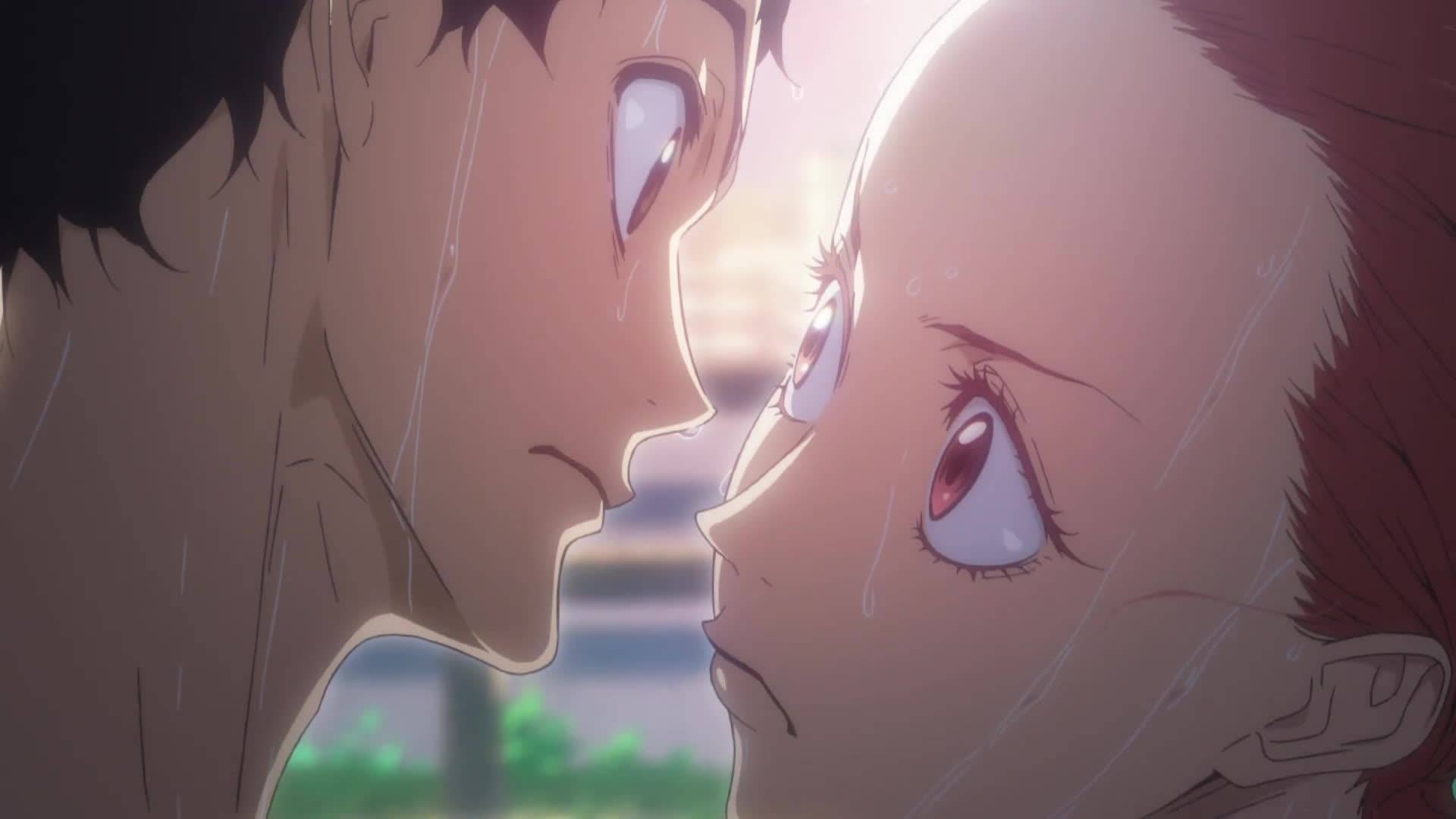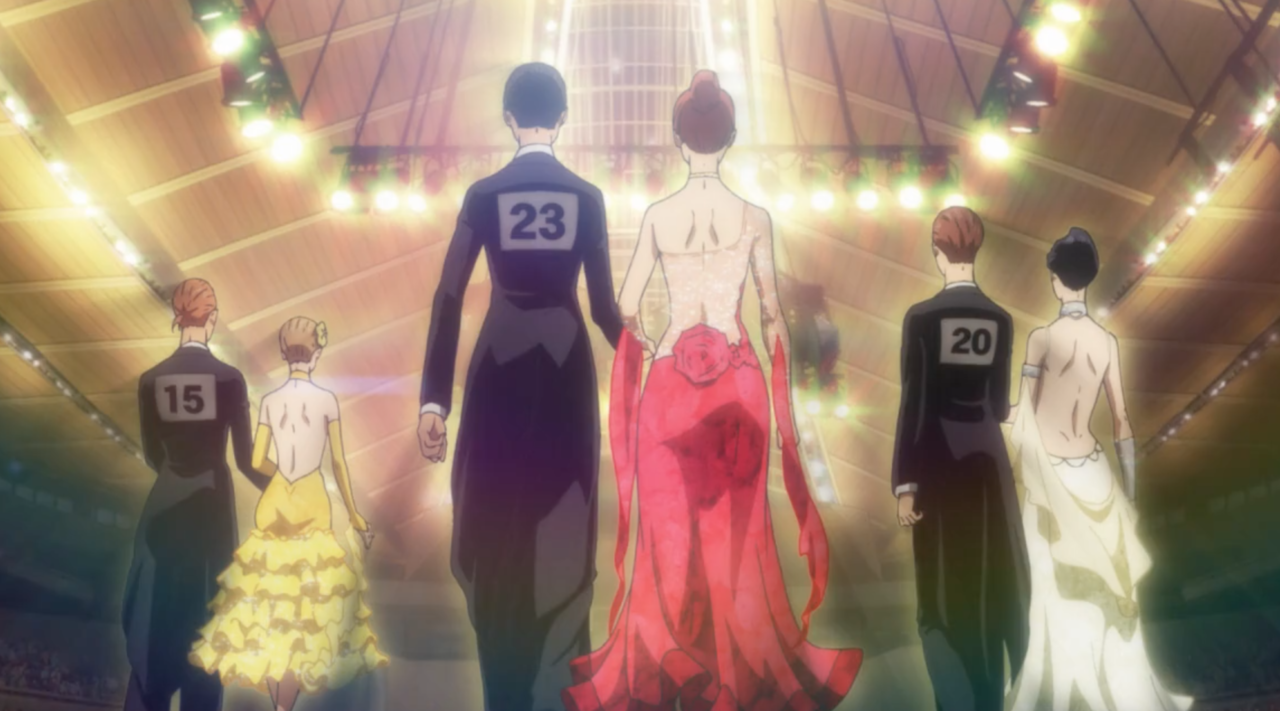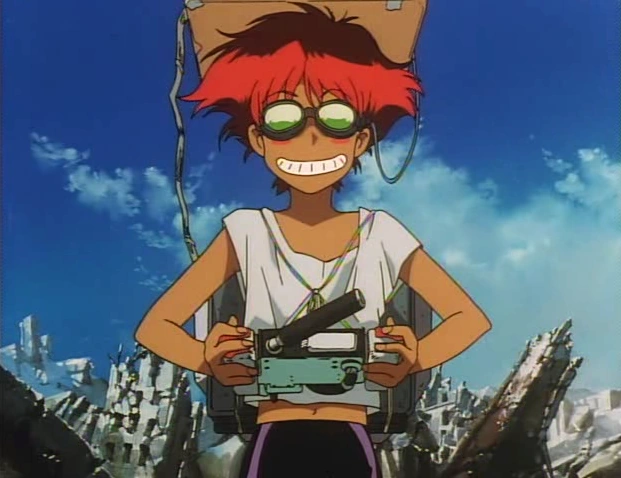Hey everyone, welcome to (a very belated) day 9 of Blogmas (whoops)! This past summer, two sports anime aired simultaneously, and I decided to follow them to see which would wind out on top! Today I present a review of the show that finished airing about a week or so ago, the anime about a young boy’s experience as a ballroom dancer, and how the sport challenged and changed him for the better!

The Summer of Sports: A Review of Welcome to the Ballroom
A spoiler-free review of the summer 2017 anime “Welcome to the Ballroom,” produced by Production I.G, directed by Yoshimi Itazu, based on the manga by Tomo Takeuchi.
Entering the World of Dance
Tatara Fujita’s another one of those introverted third-year middle schoolers with no aim in life who very soon has to make the big high school decision. On one of his particularly average days, he is harassed by delinquents, only to suddenly be rescued by an imposing gentleman on a motor cycle. His name is Sengoku, an energetic professional dancer on the international level, and it is through some miscommunication on Sengoku’s part that Tatara ends up at his dance studio. There, he meets a girl from his school: Shizuku Hanaoka—the woman of his dreams—and it is partially because of both her charm and Tatara’s own desire to change himself that he enters the world of dance. The free-spirited Sengoku sees potential in young Tatara, and thus decides to show him the steps.

Through his experience with dance, Tatara meets many people, friends and rivals alike, who will each challenge Tatara not only as an athlete, but as a young man coming of age. And it is through this same interaction with Tatara that other dancers feel encouraged to take steps to overcome their own issues and flaws. His feet will get plenty sore, and he’ll fall on the dance floor many, many times in practice, but Tatara keeps on going because of the enjoyment and wonder dancing brings into his otherwise goalless life.

From Slouch Stance to Swing Dance
One of the most exciting times to be alive was Welcome to the Ballroom‘s beginning. Its first six or so episodes set up a pretty strong premise, not to mention a promising standard of animation quality. From Tatara understanding how to stand up straight and correct his terrible slouch to learning the waltz’s basic box pattern, I truly felt inspired to try waltzing around my room like I used to so many years ago. You just want to see more and more of the characters and the sport they all love—it’s first several episodes are addictive! But it’s hard to maintain that same adrenaline over the course of one dance competition alone. Let me elaborate.
Over the course of 24 episodes, we only bear witness to what, three, maybe four competitions. And it is from each of these arcs that we are expected to understand that Tatara’s skills accelerate at a terrifyingly quick rate. One does not instantly become a pro by attending merely a couple competitions, though; the reality is that it takes tens, if not hundreds of events like competitions that challenge one’s entire range of skills. I know Tatara wasn’t defined as a “pro” by the end of the series, as he clearly still has much to learn, but the fact that he was able to equally rival some of the series’s known-to-be-greatest dancers felt somewhat unbelievable.

And while we’re on the subject of shounen arcs, a single dance could last two or three episodes, while a competition could span as great as nine or so episodes. What’s with that pacing? Had the competitions made shorter, we could’ve made room for more of them, which might’ve balanced the characterization better. In its defense, I imagine that my issues with the slow pacing would be way less apparent watching it now in marathon format as opposed to over the course of SIX MONTHS.
Where the series fails to be a completely smooth run here and there, it definitely makes up for it by proving to be VERY entertaining. Each episode does leave you craving to know what might happen in the next round, or perhaps to see which couples end up clashing on the dance floor. My pacing dissatisfaction wasn’t from “bad episodes” or “poor directing choices,” but rather a lack of action worthy enough to fill a whole episode (especially by the end). It’s not filler, it’s just slow-moving, and I suppose I’d rather a show take its time than push forward and leave out development.

Finding Something to be Good At: Tatara & Dance
To give him credit, Tatara Fujita does practice A LOT. He’s a hard worker, and in fact, many shots in the series focus on characters walking into the studio, only to discover a tired Tatara training through the early hours of the morn. Where he struggles with verbal teachings, Tatara is incredibly gifted at duplicating dance moves he has seen. Odds are that this is the reason why he is able to fair well against many dancers, including the experienced ones.
Either way, he struggles with communicating what he wants, and as such fails to grasp the masculine hold that a couple’s lead should possess. This translates across to his external conflict: great shyness, nervousness, and a lack of self-confidence around others. He dances in secret, embarrassed by being a male dancer, and is unable to make friends as a result, nor tell his dad about his newfound hobby. Mentally, he is fighting to “man up,” accept dance as a part of himself, and discover what dancing really means to him—this is all while chasing after Sengoku’s shadow, of course. Overall, I like Tatara, as his conflicts are not only relatable, but his efforts to respect and embrace what he truly loves are praiseworthy, too! Through an unlikely sport like dance, Tatara finds that one thing he wished he could be good at, as well as a way to express his true, repressed, artistic spirit.

Finding Kinship in Competition: Hyoudou & Gaju
As mentioned, several challengers oppose Tatara over the course of the series. Though they are mainly boys a tad older than he is, there are a couple of older men who provide valuable lessons and wisdom on the sport. Sengoku is the obvious culprit, but his lack of attention to Tatara kind of makes him a dick of a coach. He does have his own professional career to worry about, I suppose. And I do see why Tatara (and heck, everybody else) idolizes the guy: for all his goofiness and trouble with verbal instructions, Sengoku knows his stuff, and he sure is one eye-catching, dynamic dancer.

Then there’s the other leads, namely dancing prodigy Kiyoharu Hyoudou and the brash, loudmouth Gaju Akagi. On their own, Hyoudou’s seemingly perfect career is suffering from a hidden injury, and the way the show handled his behavior and mannerisms was quite realistic and well-handled. It’s always a surprising dilemma to see “the star” in trouble, but it can happen to anyone, and the road to recovery can really deter one’s once-blazing determination. Every time he appeared from the shadows and opened his smart mouth to make some stupidly detailed analysis of Tatara’s mistakes, however, I did low-key want to punch him in the face.

If Hyoudou is Tatara’s foil, then Gaju would be more like your standard, overly zealous competitor, the epiphany of dominance over one’s partner. He is the glue that holds the group together, though, and in times of relaxation and relief, it’s Gaju’s presence that brings out the casts’s nice chemistry.

Finding a Partner: Chinatsu & The Struggle to Connect
At first, the other female dancers seem like standards for Tatara’s partner(s) to reach and eventually pass, but thankfully, that’s not how Ballroom works. While I’m told the manga (which I can’t wait to read) fleshes out the female characters better, as you get read their thoughts, I found myself nonetheless enjoying Hanaoka’s untouchable nature and the cute Mako Akagi’s hidden glam (seriously, the Tenpei Cup final was EPIC, and I love Mako’s yellow dress). Even the adult females like Sengoku’s partner Chizuru or Hyoudou’s mom Coach Marisa serve more purpose than just being there for Tatara—they all feel like real people with their own attitudes, weaknesses, and ambitions.

As much as I loved Mako’s adorable yet strong-willed spirit, my favorite female character was one introduced in the show’s second half: Chinatsu, Tatara’s fiery future partner. Characterized as the polar opposite of Tatara—fierce, strong, bold, and most of all, a true leader—Chinatsu poses a lot of problems for Tatara (and frustration for the viewers, too). She’s essentially everything that he’s not, and her unwillingness to accept her own issues and work through them calmly (and fairly) with Tatara sets up a rocky, explosive relationship just waiting to burst. How Chinatsu’s existence changes EVERYTHING reminds me so much of Shinji and Asuka’s relationship from Evangelion, and it’s probably the reason why I like their dynamic so much.
Simply put, she’s everything that makes him uncomfortable, and he’s everything that challenges her very being.

The anime’s ending tries to cap off their relationship with a sudden “everything’s gonna be ok,” but we all know that more fights and fits are bound for this couple in the future. Their animosity was just handled so well, so powerfully, and it arguably made the long second half bearable for me. The struggle to connect and find a partner is a very intimate, vital thing, and I’m glad it wasn’t underplayed.

(To avoid spoilers, obligatory shoutout to Kugimiya and his partner Idogawa, as it was their character development that made the final competition so impactful!)
A Dancing Anime Without the “Dance”
Ballroom blossoms beautifully when it’s moving. Seriously, it’s freakin’ wonderful. But fluid scenes on the dance floor are sadly few and far between, which is odd considering that a powerhouse like Production I.G is behind the helm. This was most viewers’ biggest beef with the anime adaptation, as the manga’s pages are rife with striking, expressive motion (which seems odd for paper, but just open up a volume whenever you get the chance). Way too often than what should be allowed for a sports anime, we are treated to still frame, after still frame, after still frame, which are guided by someone annoying (like Hyoudou) verbally leading us through what should have been a thrilling, visual feast! Don’t get me wrong—Every. Single. Frame. Of this anime is drop-dead gorgeous. Like, those dresses, holy shit, wow! But man, I was sighing throughout so many of the dance scenes because I just wanted to see SOMETHING move. It could literally be a ribbon or a dress sequin—JUST MOVE IT. I really hope some animation is added to the Blu-ray releases.

(As for the giraffe necks, I didn’t mind too much. They’re glaring at first, but after a few episodes you don’t even notice how wrong it is.)
Music, the Soul of Dance
Thankfully, Ballroom manages to stay somewhat engaging during these motionless shots because of its delightful soundtrack. Perhaps this is because of musician Yuuki Hayashi’s own experience as a rhythmic gymnast; the man already knows how to match tempo and tune with fancy footwork. Hayashi is a rising favorite of mine, as he knows how to perfectly time moments that should be epic with music that is absolutely epic. From moving ensembles like “Ballroom, Shakou Dance” to THE MOST UPLIFTING BEAT OF THE CENTURY, “Ganbaritai Kimochi,” how you can’t NOT feel the emotional weight? And don’t even get me started on the dance music—waltz, salsa, jazz, swing, samba, cha-cha, Charleston, Merengue—so many styles, and so much respect for each time period’s jams!!
Hayashi’s able to take a simple melody and turn it into a gorgeous, heartwarming waltz, or even a snappy, saucy tango. I was just so happy to see my favorite time signature, the waltz’s 3/4, be revived in modern anime akin to Ouran High School Host Club‘s brilliance. It’s a shame that his dance-themed tracks would be frequently swapped out for the main OST mid-dance, unlike the continuous play like in Yuri!!! On ICE, but I suppose that makes anticipating each lovely track all the more exciting. There’s a raw love for classical strings, piano, and a bit of drums for movement in Hayashi’s internationally-infused music, and that’s why I’ll always look forward to his perfect, inspiring scores.
“Tatara’s Waltz,” “Hyoudou Tango,” “Blooming On Our Way,” “Tango City,” “Viennese Waltz,” “It’s like a symphony,” “Quick Step B,” “La Cumparsita, “Las Patineurs,” “Sing, Sing, Sing . . .” HOW CAN YOU NOT LIKE THIS VARIETY???
I’ve already talked way to much about the music in this anime, but on top of featuring a well-rounded soundtrack, Ballroom has TWO amazingly energetic openings that create so much HYPE! Both by UNISON SQUARE GARDEN (which I will now keep an eye out for), “10% roll, 10% romance” and “Invisible Sensation,” my favorite of the two, have made my “Current Faves” playlist. And I couldn’t forget about the first ED theme, “Maybe the next waltz” by Mikako Komatsu, which was sung, yes, AS A SWEET WALTZ. I JUST LOVE THIS ANIME’S STYLE SO MUCH!!
Dismantling the Stereotypes: The Beauty of Evolution
As a final note, Ballroom makes quick work of eliminating any frivolous or “girly” things you previously thought about ballroom dance. Its appropriate depiction as an equally sweaty, vigorous sport is eye-opening, and you can feel that all the people behind the project had a great respect for the sport. The anime is aware of this, and repeatedly nails in the idea that ballroom dance IS, indeed, very difficult. From the pain-staking accuracy of the sound that certain shoes make, to the flow and friction of suits and dresses, incredible attention was put into the sound effects to fully immerse you in the bustling dance floor atmosphere. Lastly, both the anime’s culturally diverse soundtrack and fashion sense pay ode to dance’s professional realities, culminating into an accurate depiction of dance’s heaviest hardships and most joyous pleasures alike.

When it wants to be, the show is also very funny, using quick-witted humor and hilarious facial reactions to lighten an unnecessarily tense mood—something that we routinely find ourselves in.
Welcome to the Ballroom clearly has many strengths, but also several weaknesses. It boasts the allure of dancing, yet frequently fails put the concept into motion. It showcases how thrilling the sport can be, yet often drags out the effect nearly to the point of boredom. But above its faults, Ballroom promotes the beauty of evolution, the purity of youth, and the countless many possibilities that come with change and transformation. It’s a dramatic story of motivation, inspiration, and progress, both for its characters and the future of the sport itself. And by its end, I couldn’t help but applaud the valiant effort made to enlighten me on the world of dance and all its ravishing, graceful, and truly elegant imperfections. It’s that rare kind of show that doesn’t come around often—and one that should not be missed.
Dance’s physical and emotional expressions seem close, but they aren’t easily tied together. It can’t be considered a real expression unless you can reflect the outside knowledge and experiences you’ve gained. That’s why with an emotional dance, you can see through the dancer’s entire life. Joy and sorrow. Love and hate. A dance with a variety of emotions adds depth. Don’t you think that becomes meaningful enough to dedicate the time in your life to dance? – Coach Marisa Hyoudou

Production and pacing problems aside, Welcome to the Ballroom‘s biggest issue right now is the lack of a licensing, as Anime Strike doesn’t count for CRAP! Seriously, someone please get a hold of the polished Japanese Blu-rays, dub it if you want, and I’ll buy three. This was such a long review, my goodness, but I wanted to make sure that I covered EVERYTHING about it! If you managed to make it from beginning to end, give yourself a pat on the back, and let me know in the comments what you thought of Welcome to the Ballroom in the comments! It’s a sweet, delicious “Cake” here at the cafe!

This concludes Blogmas Day Nine of the 12 Days of Anime, as well as part 2 of “The Summer of Sports!” If you couldn’t already tell, Ballroom definitely won the match, but I do love them both! Thanks for reading, and I’ll catch you shortly with another belated post!
– Takuto, your host














